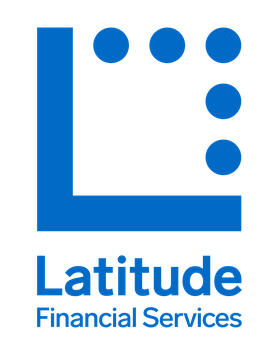
PayPal Holdings, Inc. is an American multinational financial technology company operating an online payments system in the majority of countries that support online money transfers; it serves as an electronic alternative to traditional paper methods such as checks and money orders. The company operates as a payment processor for online vendors, auction sites and many other commercial users, for which it charges a fee.

Tyro Payments Limited (Tyro) is an Australian payments financial institution specialising in merchant credit, debit and EFTPOS acquiring.

Zopa Bank Ltd. is a British online bank which offers deposit accounts, personal loans and credit cards. It began as the world's first peer-to-peer lending company in 2005 and gained a full banking licence in 2020. The peer-to-peer side of its business closed in December 2021.
Klarna Bank AB, commonly referred to as Klarna, is a Swedish fintech company that provides online financial services. The company provides payment processing services for the e-commerce industry, managing store claims and customer payments. The company is a "buy now, pay later" service provider.

Block, Inc. is an American technology company offering financial services to consumers and businesses. Founded in 2009 by Jack Dorsey, it leads the U.S. point-of-sale systems market. As of 2023, Block serves 56 million users and 4 million businesses, processing $228 billion in payments annually.
MobiKwik is an Indian financial technology company, founded in 2009 that provides a mobile phone-based payment system and digital wallet. Customers can add money to an online wallet that can be used for payments. In 2013 the Reserve Bank of India authorized the company's use of the MobiKwik wallet, and in May 2016 the company began providing small loans to consumers as part of its service.
Financial technology is an industry composed of companies that use technology to offer financial services. These companies operate in insurance, asset management and payment, and numerous other industries. FinTech has emerged as a relatively new industry in India in the past few years. The Indian market has witnessed massive investments in various sectors adopting FinTech, which has been driven partly by the robust and effective government reforms that are pushing the country towards a digital economy. It has also been aided by the growing internet and smartphone penetration, leading to the adoption of digital technologies and the rise of FinTech in the country
Global Payments Inc. is an American multinational financial technology company that provides payment technology and services to merchants, issuers and consumers. In June 2021, the company was named to the Fortune 500. The company processes payments made through credit cards, debit cards, and digital and contactless payments.

Zeta is a banking software company that was founded by Bhavin Turakhia and Ramki Gaddipati in 2015. The company provides credit and debit card issuer processing, BNPL, core banking and "mobile experiences". Zeta provides its products to banks and fintechs.

Cash App is a digital wallet for American consumers. Launched by Block, Inc. in 2013, it allows users to send, receive or save money, access a debit card, invest in stocks or bitcoin, apply for personal loans, and file taxes. As of 2024, Cash App reports 57 million users and $14.7 billion in annual revenue.

Zip Co Limited is a digital financial services company with operations in Australia, New Zealand and the USA. According to their FY24 Annual Results, across the group they had 6.0 million active customers, total transaction volume of A$10.1 billion, revenue of A$868.0m, and cash gross profit of A$372.9m.

Latitude Financial Services is an Australian financial services company with headquarters in Melbourne, Victoria, also doing business in New Zealand under the name Gem Finance. Latitude’s core business is in consumer finance through a variety of services including secured and unsecured personal loans, credit cards, car loans and interest free retail finance. As of 2018 it had around a 6% share of Australia’s personal lending market, making it the biggest non-bank lender of consumer credit in Australia.

Affirm Holdings, Inc. is an American technology company offering financial services to shoppers and merchants. Founded in 2012 by PayPal co-founder Max Levchin, it is the largest U.S. based buy now, pay later lender. As of 2024, Affirm reports nearly 19.5 million users, processing $26.6 billion in payments annually.
Sezzle is a publicly traded financial technology company headquartered in Minneapolis, U.S, with operations in the United States and Canada. The company provides an alternative payment platform offering interest-free installment plans at selected online stores. As of June 2021, the Sezzle platform had over 10 million user sign-ups and over 48,000 participating merchants.

Chime Financial, Inc. is a San Francisco–based financial technology company that provides fee-free mobile banking services through two national banks, Stride Bank and The Bancorp Bank.
Anthony Eisen is an Australian FinTech entrepreneur and is the co-founder and chief executive officer of Afterpay. Eisen and co-founder, Nick Molnar, a neighbour in the Sydney suburb of Rose Bay, started the company in 2014.

Openpay Group, commonly referred to by its trading name Openpay, is an Australian fintech company that operates in the "Buy now, pay later" field and provides online financial services and post purchase payments. Their core service is designed to allow customers to pay for items purchased using interest-free installments.
Nick Molnar is an Australian entrepreneur who is the co-founder of Afterpay.
Buy now, pay later (BNPL) is a type of short-term financing that allows consumers to make purchases and pay for them at a future date. BNPL is generally structured like an installment plan money lending process that involves consumers, financiers, and merchants. Financiers pay merchants on behalf of the consumers when goods or services are purchased by the latter. These payments are later repaid by the consumers over time in equal installments. The number of installments and repayment period varies depending on the BNPL financiers.

Zilch Technology Ltd., known as Zilch, is a direct-to-consumer ad-subsidised payments network. Headquartered in London, Zilch combines payments and advertising to offer customers flexible payment solutions for online and in-store transactions, with the vision "to eliminate the high cost of consumer credit. For good".












